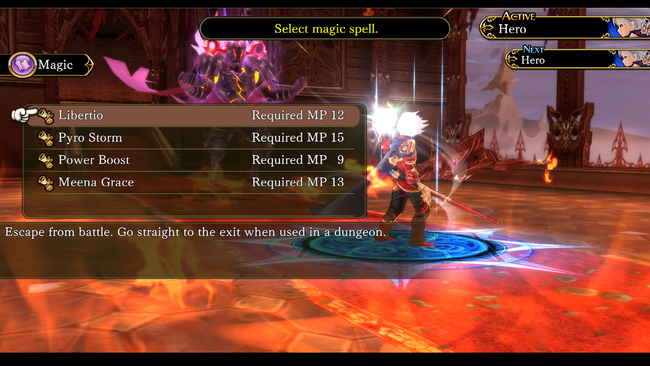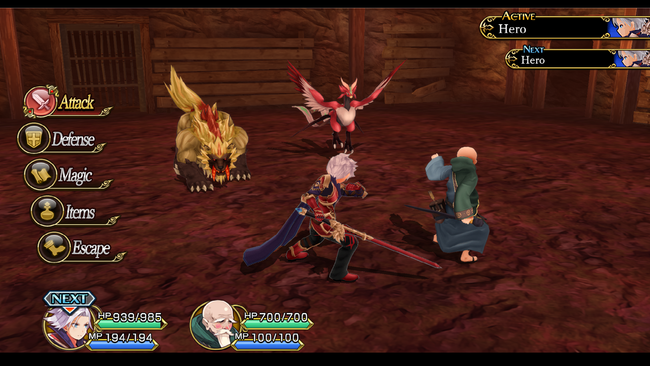Hero must die. again Review
What would you do if you had 5 days left to live?
Hero must die. again from developers Pyramid and G-Mode asks that very question, with their deconstruction of the JRPG genre. Instead of starting the story from the beginning, players take control of the legendary hero after they succeeded in their quest to defeat the Demon Lord. It wasn’t the heartwarming conclusion that anyone asked for, however – while he was successful in saving the realm, that success came at the high price of his own life. God, however, had pity on the hero for their brave deeds and elected to give them a full 5 days to settle their affairs. Armed with only a vague memory of the very woman he sacrificed his life to save, he sets off in search of her, while also attempting to tie up as many loose ends resulting from the long war with the Demon Army within the tragically short amount of time that he has been allotted.
Hero Must Die’s gameplay loop, then, is simple – each of the game’s 8 heroines represents a variety of the struggles facing the country. In a rather introspective change of pace for a JRPG, slaying the Demon Lord alone was not the end of the country’s problems – if anything, with the absence of a clear and universal threat, the country finds itself struggling to maintain order and unity. What was once a strong bond between the Human and non-Human races have now turned to tension, and even between separate pockets of Human civilization, the cities besides the capital have fielded the brunt of the Demon Army’s destruction, leading to instability across the land.
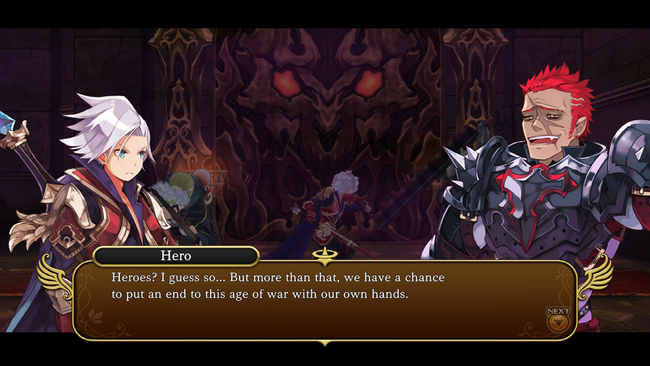
It’s far too much for any one person to hope to solve within just 5 days, let alone with the Hero’s additional handicap.
You see, while the Hero was revived for 5 days, he will slowly degrade over time, before he finally succumbs to his wounds after 120 in-game hours have passed. Indeed, while he might be at the height of his abilities for the start of his journey, players will quickly find that his stats will fall over time, and at an exceedingly fast rate if you go too long without letting the man rest. It’s not just your stats that you have to worry about, either – as time marches forth, the Hero will eventually find that his legendary weapon and armor will weigh too much for him to bear, and even his magical skills will slowly dwindle.
Hero Must Die, then, is a game about resource management. In order to get the true ending, players will need to clear every one of the Heroine’s requests at least once, before they’re even afforded the chance to attempt a True End run. While you can usually clear more than one quest for each playthrough, It’s quite literally impossible to do so on your first or even second runs. Each playthrough of the game is short – maybe around an hour long – but especially for some of the later quests, you’ll have to be laser-focused in order to achieve them. Chances are, you’re going to play the game well more than half a dozen times before everything is said and done.
For the most part, I’d say that the game offers enough variation from run to run to prevent you from getting bored with the whole concept before seeing through to the end. While you’re replaying most of the same locations each time, since by the end of the run you’ll be considerably weaker than how you started, you’re likely to tackle the game in a slightly different pattern each time. Characters like Vivi and Marianne especially force you to thoroughly explore the world, which is more than a little terrifying when you consider just how long just walking across the map can take. Time doesn’t move all that quickly whenever you’re in a town or a dungeon, but just walking from one node on the map to another can eat through the timer in no time at all.
The main method of countering this degradation is by swapping out your equipment to specifically counter the areas that you mean to tackle, going forward. Heading to the blazing Abyssian Mines? Bring fire armor and a water sword. Tackling the Blue Lagoon? Bring water armor and wind weapons. Etcetera, etcetera. Enemies are color-coded, and most of the dungeons in the game will only feature enemies of one elemental type. Naturally, that means that if you equip your character with gear that resists that element and a weapon that is strong against them, you can maintain your strength advantage even when you might lack an advantage in manpower.
Hero Must Die’s combat system is simple, with elemental advantages playing the primary role. Your party members do have access to spells that can buff your attack, defense, and speed – as well as ones that can afflict status elements against enemies, but for the most part, combat will boil down to attacking and healing. That’s fine – the game’s challenge comes from team configuration, rather than combat mechanics.
The main source of variation from playthrough to playthrough comes in the form of additional quests. From any time through the in-game pause menu, players can keep track of what they have accomplished for the other characters in the game. With some exceptions, the first quest that you clear for a character will be denoted by a star emblem below their character model in the Angel Journal. Additional quests become accessible during a playthrough directly following any playthrough where you complete a character's standard quest. Usually, these are actually a little bit easier than that initial quest, though not always – and in some cases, just figuring out what to do can be more than a little frustrating.
This is where Hero Must Die starts to stumble. Ironically enough, the closer you get to unlocking the true ending, the more your choices begin to converge. You see, every time that you complete a character's quest during a playthrough, you’ll be able to add them to your party. Most of the early game difficulty comes from the fact that, by default, your party will only consist of two members – the Hero and his former mentor. Unlocking anyone else during a playthrough requires you to finish their quest before they will join you, with one exception. At first, these quests take an incredibly long time. Sarah’s quest asks you to gather enough funds, and her object of worship, in order to help rebuild a Cathedral. However, at least some of your progress can transfer from playthrough to playthrough.
Maybe the funds that she requires will be halved. Maybe she’ll already have acquired the necessary object of worship. Either way, adding her to your party becomes increasingly trivial the further along you play. The same goes for another character, Liu.
Liu’s first quest and additional quest aren’t actually all that different – she wants you to find the Wind Orb, and give it to her as a symbol of your trust. The problem is, for the first quest she accidentally left it in the Demon Lord’s Castle, meaning you’ll have to trek all the way over to the castle and explore the entire structure to find that orb. Her additional quest, then, asks you to find the wind orb within the very same forest that you’re speaking to her in. Naturally, this takes significantly less time. Usually, you’ll find the orb only 3 or 4 screens away from where you talked to her.
Since the main obstacle standing between the Hero and fixing literally everyone’s problems is probably the lack of manpower, having easy access to additional party members the more you play the game means that while things might be difficult early on, by the time you’re on your last few playthroughs, steamrolling anything becomes a bit of a joke. Thankfully, some of the additional quests do ask the player to find some obscure item – and are generally telegraphed pretty well – but that certainly can’t be said for all of them.
Hero Must Die is at its best when it lets the player piece things together. There’s a certain item that a character’s additional quest calls for – but you won’t know where to find it unless you listen to another character’s dialog during their additional quest. While I might have criticized Liu’s additional quest, it was pretty interesting figuring out the correlation between her clues and where you might actually find the Wind Orb.
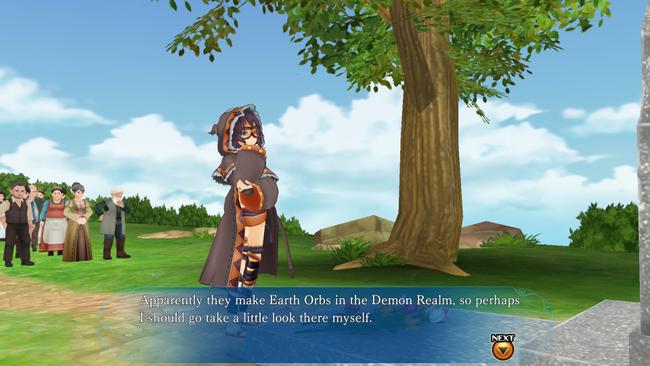
The problem is that most of these additional quests are entirely too predictable. They’re either variations on the same theme, like in Liu’s case; or in Vivi’s case, entirely too obtuse.
Vivi is a traveling merchant, who you can randomly find in towns and dungeons, and can sell you items – including, occasionally, items necessary for other character’s quests. You can only find and speak to her once every in-game day, but if you can talk to her 3 times in a single playthrough, she’ll join your party. It makes sense that it would take so much time and effort to add her to your party your first time fulfilling her quest – she has a spell that you can use to travel to literally any node on the map, without spending any of the timer. Since you’ll naturally want to speak to her every time you see her, I don’t consider her first quest completion criteria an issue – rather, it’s when you have to fulfill her additional quest that things get truly frustrating.
On any playthrough after adding her to your party, you have to go out of your way to find her in a dungeon and choose to mug her. As far as I can tell – and I really did look for an indicator – there is nothing telegraphing that this is what you need to do to start her additional quest. You can’t attempt to mug her in a town, and mugging her without having added her to your party in the previous playthrough will have her flee after the encounter instead of joining your party. The rest of the stipulations for her quest are very clear, but just figuring out what you need to do the first time around is completely and utterly baffling game design. The only reason I knew what to do was by looking up a Japanese wiki that explained it.
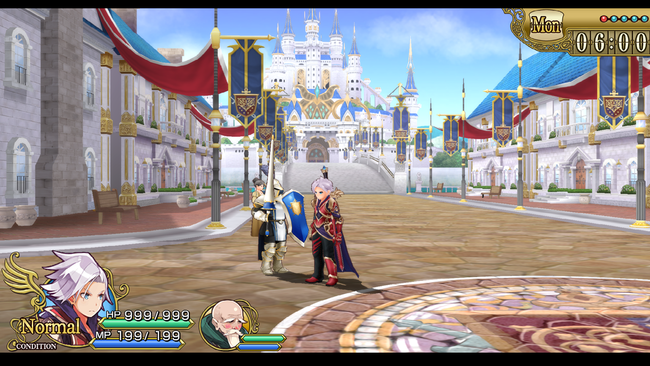
For better or worse, it’s Hero Must Die’s limited scope that defines it. While it offers a unique take on the genre, and even offers some legitimate commentary on what state a fantasy world would find itself in following a war with demons, because of how small each of its playthroughs are, and how little actual content the game holds in general, there’s only so much that it has to offer. It’s fascinating having a JRPG that directly tackles how racial tension could tear a country apart. It’s shocking seeing characters that you thought you could trust having disgusting reasons for their actions. It’s promising seeing the developers try and fully take advantage of the system that they designed for the game. Yet, it’s clear that the concept itself necessitated a game that couldn’t elaborate on any of its themes.
Maybe in a sense, it’s appropriate that we don’t get to delve too deep into the state of the world – but that doesn’t mean that I couldn’t have hoped to see more. What we did end up with is still something entirely unlike anything else on the market. Seeing your character's funeral at the end of each playthrough, including the eulogies from your friends and comrades. Getting to find out the state you left the kingdom in, and how much longer things last after your death. Heck, even seeing some characters hint at their additional quest solutions during those same eulogies is a really neat touch.
As flawed as it may be, I find it impossible to hate Hero Must Die—I just hope that the developers can have another chance to make a follow-up. They more than proved that the concept could work, and there are some real makings for a truly fantastic RPG. What we’re left with here might not be a must play in its own right, but is absolutely the type of unique experience you won’t likely forget. My time with Hero Must Die was always fated to be short-lived, but it will certainly live on in my memories.
